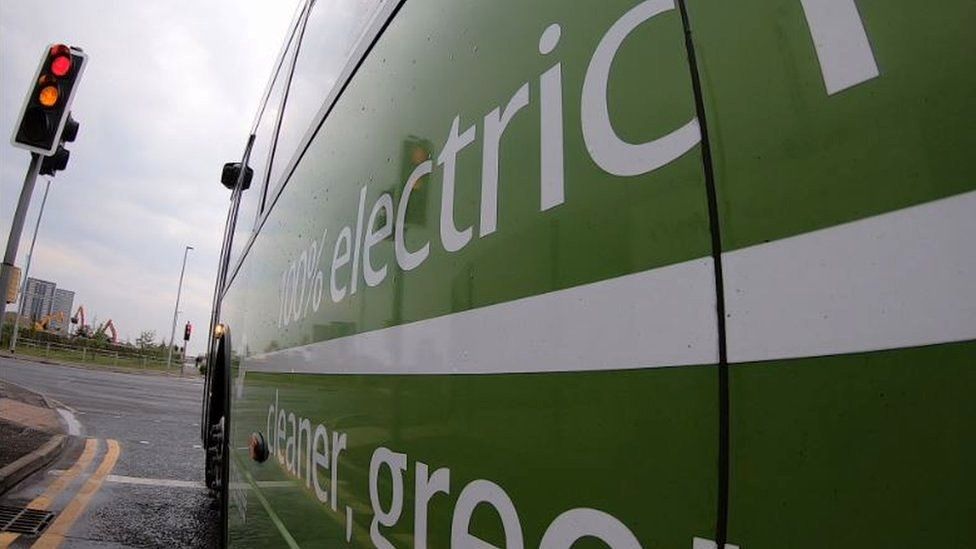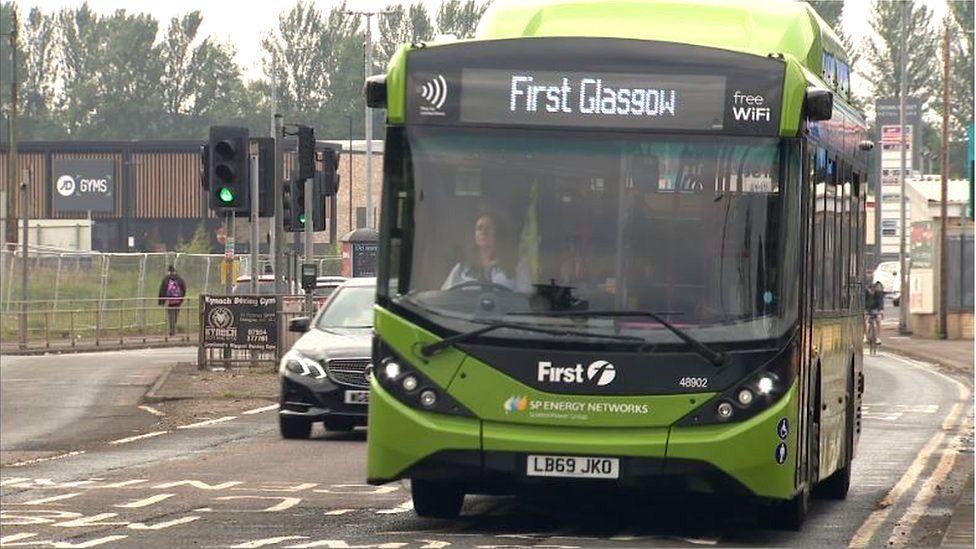When Carl Benz applied for a patent for his “vehicle powered by a gas engine” in January 1886, he ignited what would later become a revolution in transportation. Over the centuries, improvements would be made to Benz’s idea, which ultimately led to making privately owned cars and large-scale projects like buses and subway systems central to urban mobility. Popular as they are, the traditional modes of public transportation like privately owned cars, public buses, and subways have their challenges. They are expensive to establish and maintain, result in gridlocks, pollution, and a shortage of parking in most major cities. Within the context of the challenges related to traditional forms of mass transportation, the Segway’s introduction in 2001 started a trend of replacing large-scale public infrastructure with small, one-person electric vehicles. McKinsey & Company, the management consultancy firm, calls this type of transportation micromobility. This article looks at the evolution of one-person electric modes of transport and how they have impacted urban transportation. We start by focusing on the urban transport challenges that have made one-person electric vehicles a growing urban transit option. We then look into the history of these forms of transport and some safety tips for people using them.
Challenges of traditional public and private urban transportation
The challenges associated with extensive public transportation projects are well documented. An article published by Australia’s University of Melbourne puts these challenges into perspective. It says, “Chronic losses of life on roadways, dangerous deterioration in air quality, and worldwide accumulation of atmospheric carbon can no longer resist the challenges of an increased population and its urbanization.” These challenges are partly responsible for the increasing trend where people prefer to use one-person electric vehicles.
Traffic congestion and parking challenges
An article produced by Dr. Jean-Paul Rodrigue and published by TransportGeography.org provides a detailed analysis of urban transport challenges. The first challenge noted by Dr. Rodrigue is one that anyone who has lived in an urban area for more than a few minutes is aware of: traffic congestion and parking difficulties. He notes that even though traffic congestion can occur in any city, it almost becomes a given when a city’s population passes the 1-million threshold. Dr. Rodrigue notes that the challenge of congestion emanates from the fact that the growth in the number of vehicles on the roads is not matched by the growth in the infrastructure to handle the vehicles. Also, he suggests that because vehicles spend a lot of their time parked, the demand for parking space increases. A shortage of parking in urban areas leads to more traffic congestion because when drivers look for empty spots where they can legally park their cars, they often drive slowly. This slow driving “creates additional delays and impairs local circulation,” says Dr. Rodrigue.
Environmental impact and traffic noise

An article shared on the website Geographynotes.com brings to the fore the challenge of pollution linked to traditional urban transportation forms. The writer of the article, Raghav, sums up the problem: “Traffic noise is a serious problem in the central area of our towns and cities, and there are other environmental drawbacks brought about through trying to accommodate increasing traffic volumes.” The polluting nature of the traditional modes of urban transportation could impact the quality of life of pedestrians. For instance, with less space for walking and the hazards associated with moving vehicles, some people may be discouraged from doing outdoor activities. This would result in the sedentary lifestyles that are often blamed for some of our time’s leading health challenges, such as obesity and high blood pressure.
Health concerns
The current COVID-19 pandemic has also emphasized the health risks associated with public transportation. Some people are now hesitant to use public transport, which could push more people to choose micromobility. McKinsey & Company notes that even though the micromobility industry has suffered as a result of COVID-19, the pandemic has resulted in people taking longer trips in one-person electric vehicles like scooters. The firm reports that “According to a US micromobility company that rents e-scooters, average trip distances have grown 26 percent since the start of the pandemic, with rides in some cities, such as Detroit, increasing by up to 60 percent.”
Personal and electric scooters

Even though electric scooters seem to be getting popular nowadays, they have been around for over a hundred years. John Linden, writing for the website CarCovers.com traces the history of the electric scooters to the 1700s when innovators like Andrew Gordon and Benjamin Franklin developed the very first electric motors. The advancement in electric scooters would continue over the centuries. An article published by Medium.com reports about an electric scooter, known as the Autoped, which went on sale in 1915 New York. The Medium.com article reports that Autopeds targeted women who were progressively becoming independent when these early electric scooters were introduced. The piece claims that “The company sought to establish their scooter as a practical symbol of women’s newfound freedom and mobility, with suffragettes such as Lady Florence Norman” becoming early adopters “when the vehicles hit Great Britain in 1916.” Others see the Autoped as the first mass-produced electric scooter in the US. For instance, Jackie Mansky writes for the Smithsonian Magazine and quotes the Online Bicycle Museum, which says that the Autopeds are “the true ancestors of the modern motor scooter.”
The beginning of mass production
Linden reports that advancements in electric scooter technology in the past half a century would result in the mass production of one-person electric vehicles. He says that Peugeot invented the first mass-produced electric scooter named Scoot’Elec. Even though successful, Linden says that the Scoot’Elec tended to be “heavy and not very eco-friendly due to its nickel-cadmium batteries.” This challenge would be alleviated in the modern wave of electric scooters by the growing popularity of lithium-ion batteries that increased convenience and efficiency.
The growth of electric scooter sharing
In an upbeat article about the future of the electric scooter, the company that provides applications for the transport industry, Esferasoft, says, “Visit Spain, and you’ll find more electric scooters than cars and motorcycles. And in the [near future], similar scenes could be witnessed in the US and other European countries.” Esferasoft reports that “The global e-scooter market is skyrocketing as more people are shifting from private and public transport to electric scooter rentals. E-scooters are environment friendly and reduce pollution.” Adding, “Besides, they’re an affordable mode of transportation.”
Introducing the Segway personal transporter

The introduction of the Segway personal transporter by Dean Kamen in 2001 is often hailed as the beginning of micromobility’s popularity. According to an article published by the education website Britannica.com, Kamen has a history of inventing innovative technologies such as a portable kidney dialysis machine and a wheelchair that climbed stairs and could stand upright. The technology used in the latter would inspire the development of the Segway. Britannica.com reports that “Kamen claimed that the Segway, with its built-in gyroscopes, computer chips, and tilt sensors, would make getting around cities so easy that automobiles would become unnecessary.” The website also says that the device’s supporters saw it as an environmentally friendly way of alleviating traffic congestion and boosting productivity.
Unable to meet expectations but making micromobility popular
Even though some acknowledged the Segway’s potential, others warned that it could result in injury due to collisions. The production of the Segway was discontinued in June 2020, after about 140,000 units had been sold. Some attribute the low number of vehicles sold to the fact that the price was steep at $5,000. FastCompany.com cites the president of Segway, Judy Cai, who suggested that Segway’s engineering may have been partly to blame for its inability to meet expectations. Cai suggested that there were several redundant systems in the vehicle which were intended to “keep it operational even if some components fail—which is good for users, but not the bottom line of a company that needs to sell new units year after year.” Even though the Segway did not get the kind of popularity that would make automobiles unnecessary, it made the idea of micromobility a popular one. This view is acknowledged by Mark Wilson in an article published by FastCompany.com. He says, “And while the Segway didn’t become the democratic urban mobility machine that Kamen had teased, it did find a foothold in security and tourism.”
Electric skateboards
Introduced in the 1970s, the Motoboard is seen as the beginning of motorized skateboards. Chris Hudak writes for Wired.com, telling the story of the Motoboard. He reports that this motorized skateboard could reach speeds of up to 30 mph. According to Hudak, the Motoboard was powered by a gasoline-burning engine. He says that the device was operated using a “hand-held trigger throttle that automatically returns to idle when released, and gentle braking is controlled by engine compression.”
The name behind the electric skateboard
Almost every article attempting to follow the history of the electric skateboard includes the name of Louis Finkle. James Flynn writes an article for TransportationEvolved.com and reports that when Finkle designed his electric skateboard in 1997, he filed a patent for it in California. Flynn reports that the idea of an electric skateboard came about when Finkle was looking for a motor and came across a wireless controller. Finkle’s creative mind went to work as soon as he had his hands on the motor and the wireless controller. He pictured these components working together with the skateboard, and the idea of the electric skateboard was born. Finkle’s electric skateboard had impressive performance in its day. For example, Flynn reports that the electric skateboards could reach speeds of up to 22 miles per hour within 4 seconds. No wonder buyers of the skateboard received only $5 change from $1,000 when paying for it.
Driving the popularity of electronic skateboards
Even though they have a relatively long history, it looks like electric skateboards are gaining popularity in the last few years. This is a view also acknowledged by Tim Conneally in an article published by Forbes.com. Conneally also attempts to explain why there is a renaissance of sorts when it comes to electric skateboards. One of the reasons advanced by Conneally is that there is a growing use of e-vehicles. He believes that “The Segway blazed a difficult trail for modern electric vehicles.” Conneally says that the growth in the popularity of motorized e-vehicles can be noted in the number of patents registered worldwide in the five years after 2001: 16,670. He reports that “These patents covered all manner of electric vehicle, from car to boat to bicycle, but small-scale electric engine development had risen appreciably thanks in part to the Segway.” Another reason often cited for the popularity of electric skateboards and other personal electric vehicles is that they do not burn fossil fuels that release harmful gases into the atmosphere. This quality makes them environmentally friendly compared to the traditional mass-transport modes. When you consider that electric skateboards allow for an effortless ride, you will see that they can easily be used when traveling for any occasion. Unlike the kick skateboards, the electric version ensures that you don’t arrive wherever you go out of breath and sweaty.
Importance of safety when using one-person electric vehicles

From the various views expressed above, it’s clear that many people are starting to see micromobility as more than a stunt used by those who want to look cool or fit in with the crowd. One-person electric vehicles are becoming a practical alternative for urban transit. This means that users of such vehicles need to guard against accidents that may cause injury or loss of life while riding these vehicles.
One of the primary precautions that should be taken by people using one-person electric vehicles is to ensure that they know how to use such vehicles before they venture into public areas. This should be complemented by wearing proper gear when riding, such as a helmet.
Whenever you ride in public areas, always wear bright colors so that other road users can easily see you.
It is also crucial that you do essential maintenance on your one-person vehicle regularly. This will ensure that important features like the braking system work before you embark on a journey.














